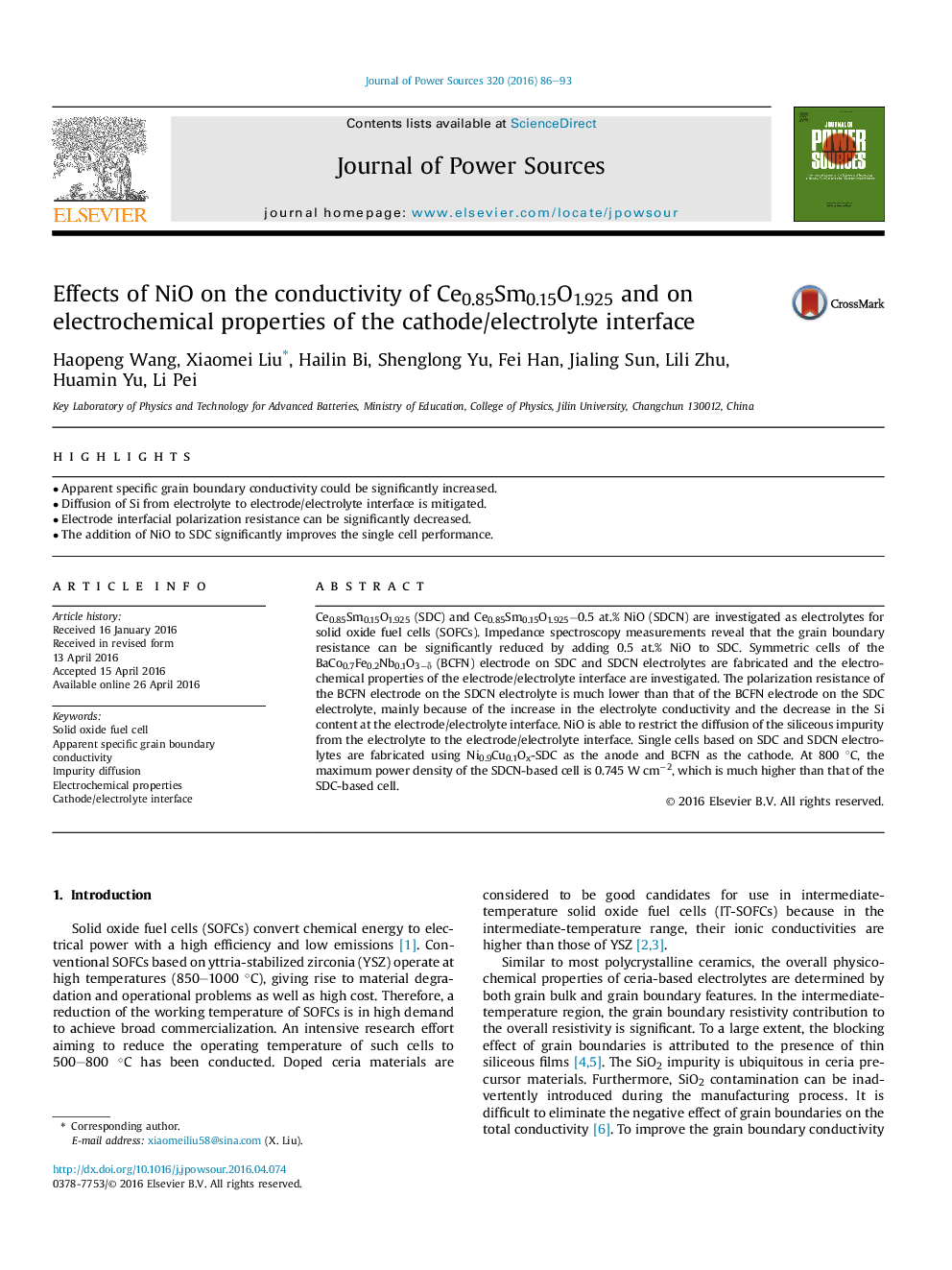| Article ID | Journal | Published Year | Pages | File Type |
|---|---|---|---|---|
| 1286059 | Journal of Power Sources | 2016 | 8 Pages |
•Apparent specific grain boundary conductivity could be significantly increased.•Diffusion of Si from electrolyte to electrode/electrolyte interface is mitigated.•Electrode interfacial polarization resistance can be significantly decreased.•The addition of NiO to SDC significantly improves the single cell performance.
Ce0.85Sm0.15O1.925 (SDC) and Ce0.85Sm0.15O1.925−0.5 at.% NiO (SDCN) are investigated as electrolytes for solid oxide fuel cells (SOFCs). Impedance spectroscopy measurements reveal that the grain boundary resistance can be significantly reduced by adding 0.5 at.% NiO to SDC. Symmetric cells of the BaCo0.7Fe0.2Nb0.1O3−δ (BCFN) electrode on SDC and SDCN electrolytes are fabricated and the electrochemical properties of the electrode/electrolyte interface are investigated. The polarization resistance of the BCFN electrode on the SDCN electrolyte is much lower than that of the BCFN electrode on the SDC electrolyte, mainly because of the increase in the electrolyte conductivity and the decrease in the Si content at the electrode/electrolyte interface. NiO is able to restrict the diffusion of the siliceous impurity from the electrolyte to the electrode/electrolyte interface. Single cells based on SDC and SDCN electrolytes are fabricated using Ni0.9Cu0.1Ox-SDC as the anode and BCFN as the cathode. At 800 °C, the maximum power density of the SDCN-based cell is 0.745 W cm−2, which is much higher than that of the SDC-based cell.
